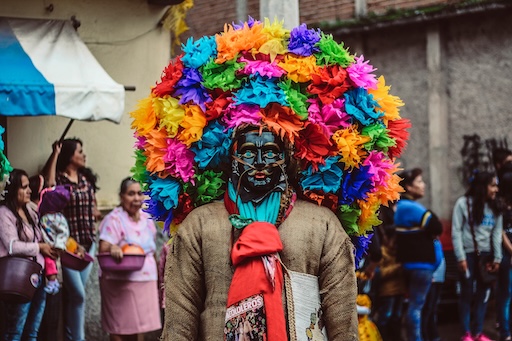
In the sunbaked highlands of Guerrero, where the wind rustles through maize fields and ancient spirits seem to linger in the dust, a fierce dance takes place. It’s loud, chaotic, and deeply symbolic. Men dressed as jaguars — muscular, masked, and wild-eyed — prowl, leap, and crack whips in a ritual performance known as the Tlacololeros Dance. If you've never heard of it, you're not alone. But once you see it, you won’t forget it.
This isn’t just a performance — it’s a story in motion, a dramatic retelling of an ancient struggle: man vs. nature, farmer vs. the wild, survival vs. chaos. At its core, it’s about one of humanity’s oldest battles — the quest to protect the harvest.
The Name and the Earth
The word “Tlacololero” comes from tlacolol, a Nahuatl term that refers to sloped farmland or the act of cultivating hillside fields. It’s a reminder that this tradition was born from the soil, from the sweat of laborers carving crops into rugged mountainsides. These were not wealthy people. They were peasants, survivors, and guardians of maize — the sacred grain of Mesoamerica.
The dance originated in central Guerrero, particularly around the town of Chilpancingo, and is still performed during patron saint festivals, agricultural celebrations, and the Feast of San Isidro Labrador — the farmer’s saint. But don’t expect something genteel. This is performance as ritual combat.
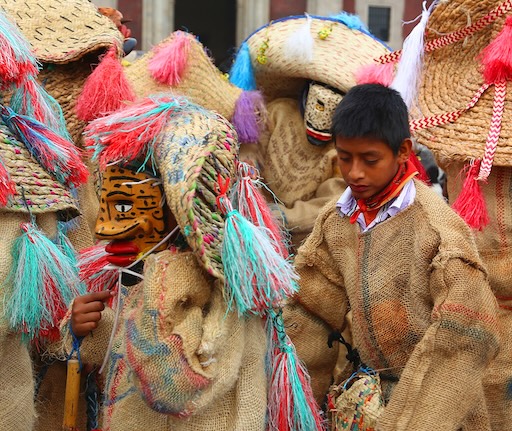
The Characters: More Than Just Men in Masks
The Tlacololeros aren’t just leopard-men. Each dancer plays a role in a symbolic narrative. There’s el Tlacololero, the farmer and hero of the story. He is humble, strong, and armed with a whip — the symbol of his labor and his only weapon against the chaos of the wild.
Then there’s el Tigre (the “tiger” — which in Mexico usually refers to a jaguar), representing the forces of nature: hunger, destruction, drought, or predation. Other roles include the old man (el viejo), the dog (el perro), and even satirical characters like corrupt officials or devils. Each figure interacts, confronts, or teases the others, creating a play-like performance full of comedy, tension, and physicality.
The climax comes when el Tlacololero confronts el Tigre in a dramatic showdown. There’s leaping, roaring, lash-cracking — and eventually, the beast is subdued. The land is safe. The crops can grow. The people cheer. But they know the battle isn’t won forever. Nature always returns.
Whips, Masks, and Madness
What makes the Tlacololeros visually unforgettable are the hand-carved masks, often painted with exaggerated expressions — toothy grimaces, wide eyes, bright colors. The jaguar costume is usually made of spotted fabric or leather, sometimes complete with claws and tails. The whip (chicote) is more than a prop — it’s a tool of rhythm and intimidation. The crack echoes like thunder through the village plaza.
There’s music, of course — fast-paced drumming, violins, and rustic instruments that create an atmosphere that’s equal parts festive and primal. The dance can last for hours, and by the end, performers are drenched in sweat and dust, masks askew, voices hoarse from growling or shouting.
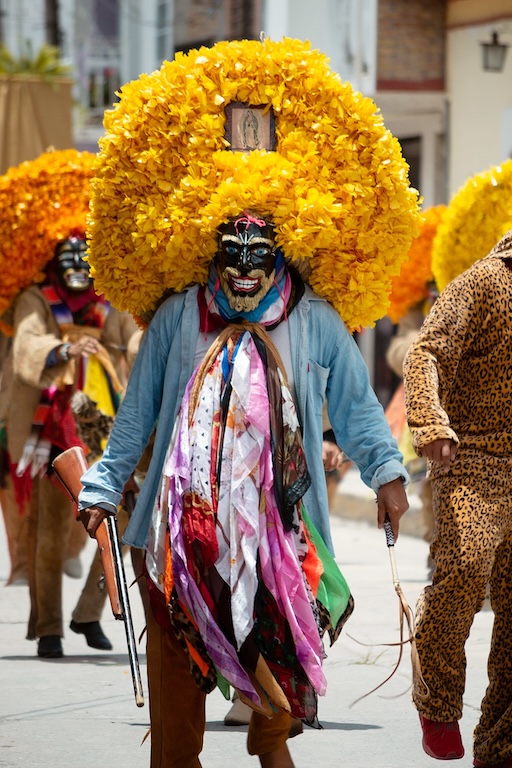
Laughing at the Wild
One fascinating aspect of the dance is its mix of comedy and ritual. While the conflict between man and jaguar is real, the performance often includes farce, parody, and playful teasing. The dog might chase the tiger. The old man might forget his lines or fall asleep. The Tlacololero might get “bitten” and run away screaming, only to return triumphant moments later.
These moments aren’t just for fun — they reflect a deep cultural truth: survival requires resilience, but also humor. The dance teaches that while the natural world can be dangerous and unpredictable, it can also be laughed at, danced with, and faced with courage — and maybe a joke or two.
From Field to Festival
While originally rural, Tlacololeros has made its way into city parades, school performances, and even cultural festivals across Mexico. Yet its heart remains in Guerrero’s small towns, where the dusty streets still know the rhythm of the whip and the clatter of handmade boots on earth.
It’s a living tradition — passed from father to son, neighbor to neighbor — and one that continues to evolve. Some groups now incorporate female dancers, environmental themes, or modern references into the act. But the core remains the same: a battle between the human will to grow food and the untamable forces of nature that try to stop it.
A Hidden Wonder in Motion
The Tlacololeros Dance isn’t world-famous. It doesn’t fill stadiums or sell tickets online. But it’s real. It’s raw. It’s old. And it matters — especially in a world that often forgets where food comes from, or how deeply connected we still are to the wind, the rain, and the teeth in the dark.
So if you ever find yourself in Guerrero during festival season, follow the sound of the drums. Watch for the leopard-men stalking the plaza. Stand in the shade with locals sipping pulque or clapping in rhythm. And when the whip cracks, and the jaguar roars, and the farmer lifts his hat in triumph — remember: you’re not just watching a dance. You’re witnessing a story as old as civilization itself.
Share this story and inspire others.
Tags: Tlacololeros, Guerrero, Mexican folk dance, leopard men dance, indigenous tradition Mexico, harvest rituals, hidden cultural wonders
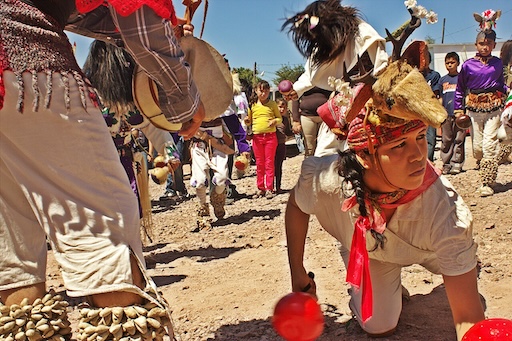 La Danza del Venado – The Sacred Deer Dance of the Yaqui People
La Danza del Venado – The Sacred Deer Dance of the Yaqui People
 Tarahumara Rarámuri – The Ultramarathon Runners of the Sierra
Tarahumara Rarámuri – The Ultramarathon Runners of the Sierra
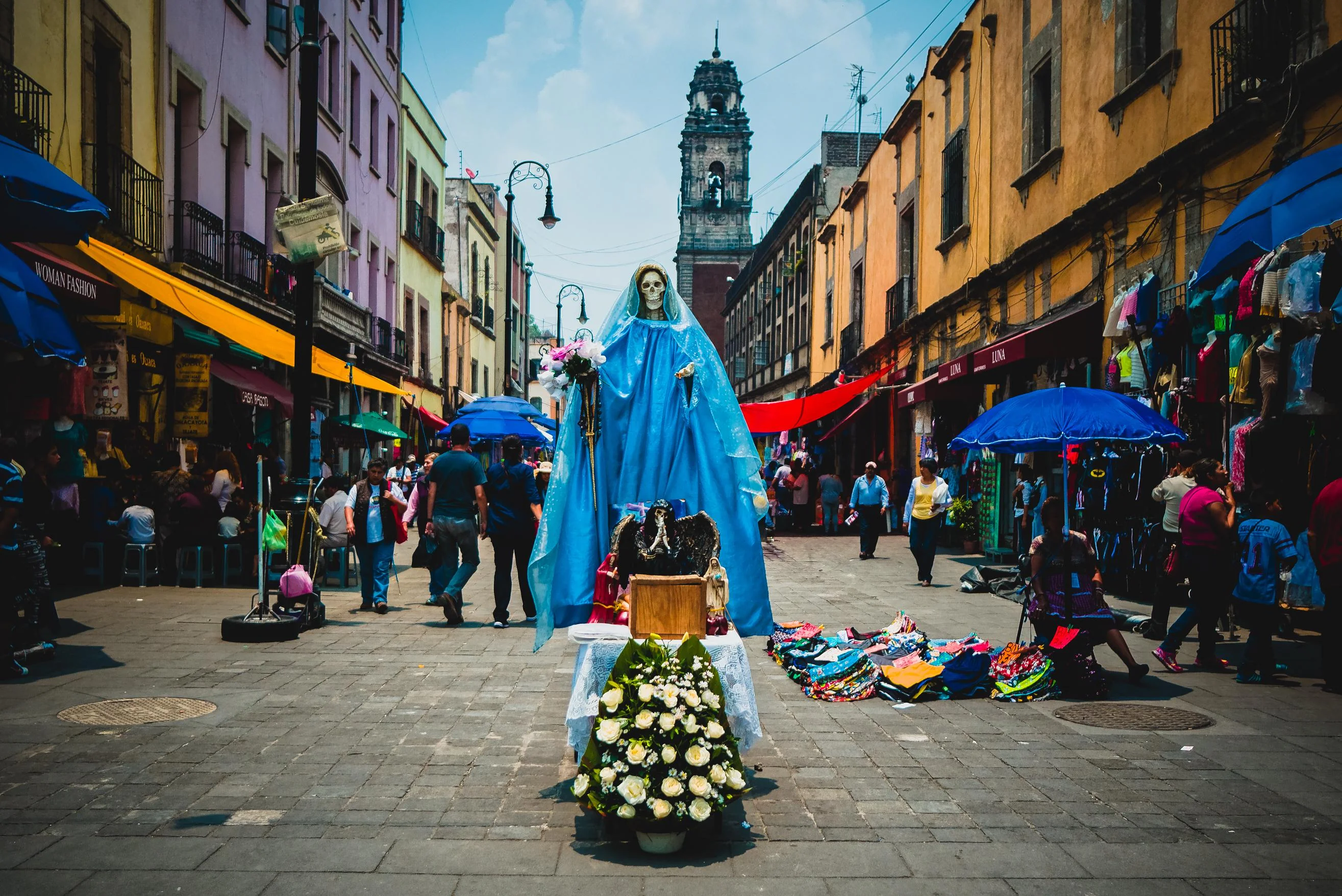 La Santa Muerte – The Controversial Saint of Death
La Santa Muerte – The Controversial Saint of Death
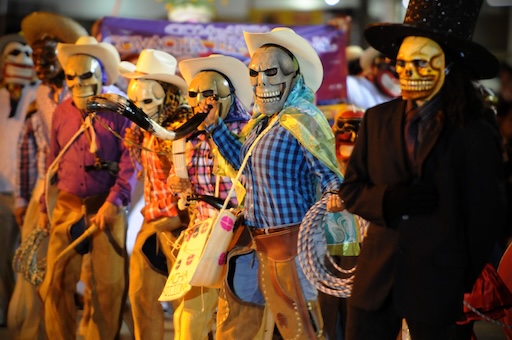 Xantolo – The Huasteca’s Version of Day of the Dead with Masks and Dances
Xantolo – The Huasteca’s Version of Day of the Dead with Masks and Dances
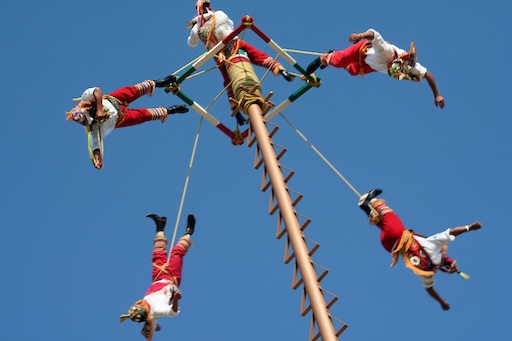 Voladores de Papantla – Men Who Fly from Poles
Voladores de Papantla – Men Who Fly from Poles
 Cenote Sagrado – Sacred Sinkhole of the Maya
Cenote Sagrado – Sacred Sinkhole of the Maya
 Cueva de los Cristales – Mexico’s Giant Crystal Cave
Cueva de los Cristales – Mexico’s Giant Crystal Cave